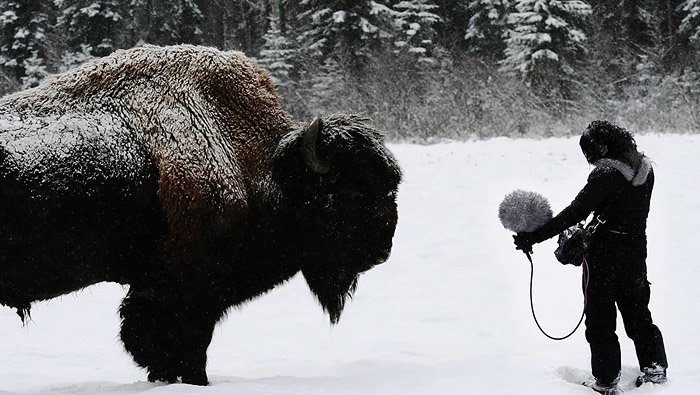
I’m cutting BGs (a.k.a. backgrounds, ambiences, atmospheres) on a film right now and looked over some advice I got years ago from a veteran editor. I’ll share some of it with you all here 🔊🧵
#filmsound #filmaudio #soundeffects #fieldrecording #sounddesign
#filmsound #filmaudio #soundeffects #fieldrecording #sounddesign
• Think of sounds for transitions, and how to define small changes in space (bottom of cliff vs top). Think of contrasts, e.g. temperature, size of space, mood.
• Play perspective and scene transitions with a punctuation, something big to get into the next scene. Punch cuts for effect using dynamic range (explosion on the cut etc.). Think outside of the box too, think in abstracts, nonliteral elements.
• Mark things with BGs: mark location and character, and use fresh perspectives to sell a new space when possible. Comment on the action with specific reactions in the environment, e.g. an animal vocal, a fly, crowd.
• Look for gaps in dialogue to place specifics, but don’t be overt by filling only the gaps; smooth in & out. Always look for opportunities in case something has room to be used in the mix. For long dialogue scenes, support without trying to take over. The story is the dialogue.
• Match natural wind with specific movements like wind in grass, leaves, cloth, etc. materials. Keep the air present too. Sneak in gusts and things for cause-and-effect thinking.
• Research appropriate birds and insects, if applicable. You can pitch things like insects (growing faster or slower) to achieve tension.
• Rain and fast moving water: very easy to sound like fried eggs! e.g. for waterfall put in a track of gurgle water like a small creek to keep it from being white noise hissy. Rain too, add something splashier. Drips on a separate track give the mixer flexibility.
• With rhythmic BG elements you can vary the pace (shrink or expand) to manipulate tension. Less is more sometimes, and the space of less sounds can be a powerful tool.
end 🧵!
BGs can be time consuming, but I enjoy sleuthing around the sound library for the perfect specifics and transitions, and thinking outside the box about what is NOT on screen but could be part of my toolbox.
BGs can be time consuming, but I enjoy sleuthing around the sound library for the perfect specifics and transitions, and thinking outside the box about what is NOT on screen but could be part of my toolbox.
Probably my #1 tool when cutting BGs is to play the scene with all my layers while selectively muting one then another then another, shuffling through them. This shows my ears what each layer is contributing—or not! I eliminate or replace anything that's not pulling its weight.
I've also paid attention to how re-recording mixers EQ on the predub stage, so I can replicate during editing and save them time. Stuff like filtering out super lows and super highs, removing weight and hiss from sub-par recordings. Pare right to the character of the sound.
Lastly, I had to teach myself to think in terms of filling a theater, even when cutting the "plain air" predub. A rookie mistake I see often is to only provide one or two stereo options. What if one of those sucks in the big room?? 1/2
The next level up is to understand how the surround speakers feel vs the sides and fronts and choose specific frequency ranges based on what will sit well where. This comes with experience!
Ultimately, a happy mixer is one who can do their best creative work. 💙 2/2
Ultimately, a happy mixer is one who can do their best creative work. 💙 2/2
• • •
Missing some Tweet in this thread? You can try to
force a refresh





